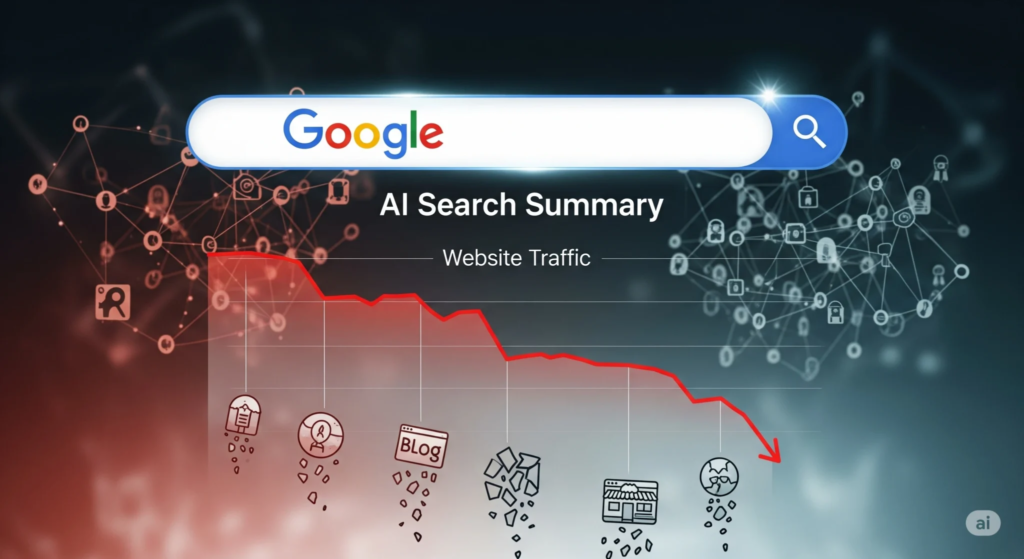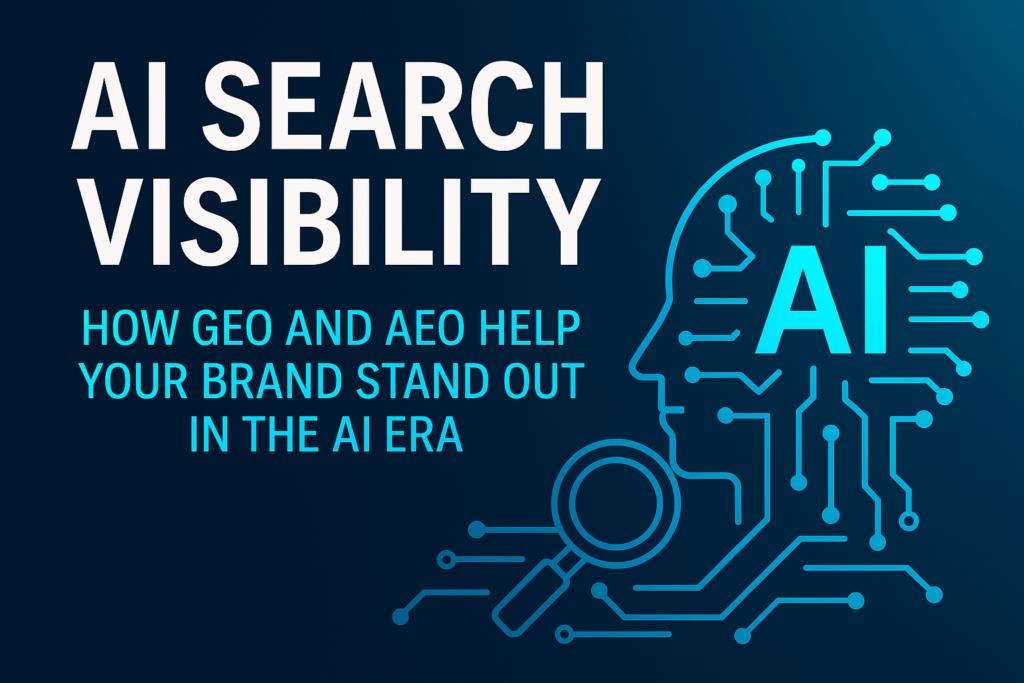Consumers Distrust AI Search Summaries and Research Shows It
When consumers increasingly distrust AI search summaries, it signals a deeper tension in how people research products today.
AI search summaries are concise results generated by artificial intelligence to give you a quick overview of information online. They aim to highlight key points without requiring you to read every source.
Many rely on AI for speed, yet they hesitate when results feel incomplete or misleading. Evidence shows this skepticism grows with each skipped detail or generic summary.
Traditional search still offers familiarity, context, and a sense of control.
Brands therefore need to understand these trust patterns to remain relevant.
Here’s why.
The challenge is balancing convenience with credibility, speed with depth. Consumers are looking for certainty, and how you respond now shapes long-term engagement and influence.
2. Why Many Consumers Distrust AI Search Summaries
People distrust AI summaries because small errors make the information feel unreliable, even when most details seem correct. But when sources stay hidden and reasoning is unclear, readers lose confidence quickly. Clear proof and visible logic reduce this doubt and rebuild trust effectively.
Uncertainty Around Accuracy and Reliability
Many users still hesitate because they distrust AI search summaries when accuracy feels inconsistent.
You want clear answers, not approximations presented with inflated confidence.
Here’s why.
When a summary mixes correct information with subtle errors, it creates doubt that lingers through the entire research journey.
You’ve been there.
It hurts, right?
People naturally rely on familiar signals like detailed explanations, visible sources, or expert opinions.
When those cues are missing, trust weakens quickly. That’s why high quality content is crucial for search authority.
Notice something?
Even minor inaccuracies push readers back to traditional search channels where they feel more in control.
Think about that.
A small shift in perceived accuracy changes everything. Worth considering.
The Transparency Gap That Creates Friction

Source: OpenAIMaster
Readers often distrust AI search summaries because they cannot see how the tool formed its conclusions.
Truth be told.
Without visible citations, step-by-step reasoning, or source context, summaries feel like sealed boxes rather than clear guides.
Picture this.
Transparency creates comfort, and comfort creates trust.
When the mechanism stays hidden, users question the validity of every line they read.
Makes sense, right?
This uncertainty becomes emotional friction, not just intellectual doubt.
Feel that?
Even if the AI produces accurate content, the absence of traceable logic makes people return to traditional search results for reassurance.
Small shift. Big payoff.
3. How AI Search Summaries Affect the Research Journey
AI summaries help you get quick initial clarity, but they skip deeper details that matter during comparisons, so confidence drops as decisions get serious. That is why most people return to full reviews and trusted sources before buying.
Useful During Initial Discovery Stages
In early exploration, many readers find value, even if they still distrust AI search summaries.
The appeal lies in speed.
You get a quick overview without digging across multiple pages. Simple. Powerful.
Yet notice something?
This quick clarity helps you shape initial options before going deeper.
Think about that.
Early-stage decisions depend on broad understanding, not detailed comparisons. That makes AI-generated overviews ideal for orienting yourself.
Yet, once you look for specific features or nuanced differences, the limitations appear.
Notice what shifted?
Emotional nudges fade, and logic takes over.
You know this. That is when users shift back to conventional search to validate the foundation they just built.
Declining Value When Comparing Multiple Choices
Once comparison begins, users often distrust AI search summaries because they cannot capture intricate differences between similar options.
Strange, right?
Comparisons require structured detail, not streamlined summaries.
Ask yourself why.
Summaries compress information to stay concise, and that compression removes nuance that matters during decision-making.
You’ve been there.
You try to weigh two products, yet the AI collapses them into generic descriptions.
That gap creates frustration.
Here we go.
People want clarity cues at this stage so they can separate strengths and weaknesses. Without them, the research journey slows, which affects confidence in the final decision.
Lowest Trust During Final Purchase Decisions
At the final buying stage, most users distrust AI search summaries because this is where risk feels highest.
See the pattern?
The closer you get to spending money, the more you want verifiable details. No surprise here.
But here’s what counts.
Decision stakes rise, so generic summaries feel insufficient and sometimes unsafe. Read that again.
When the outcome matters, people lean on deeper reviews, expert breakdowns, customer experiences, and long-form content.
Trust becomes the currency of the moment.
That is the point.
Final steps require reassurance, and reassurance rarely comes from compressed interpretations of complex information.
4. Traditional Search Still Dominates Real Consideration
Why Traditional Search Feels More Reliable
Many users continue to prefer traditional results, even if they occasionally explore AI-generated options, because they still distrust AI search summaries.
Here’s why.
Traditional search offers multiple viewpoints instead of a single filtered answer.
That variety produces confidence.
You see choices, not conclusions handed to you.
Makes sense, right?
You can compare sources, cross-check details, and confirm credibility by scanning deeper pages. Imagine that.
Different voices create natural friction, and that friction supports better decision-making.
You know this.
This ecosystem feels more transparent, which explains why traditional search remains dominant in serious research moments.
The Feeling of Control That Users Prefer
People often distrust AI search summaries because summaries remove the sense of agency that traditional search provides.
Notice something?
When you type a query and get ten different options, you choose how deep to go.
Here we go.
That control makes the process feel personal and thoughtful. With AI-generated summaries, the system decides what is relevant and compresses everything into one narrative.
That shifts power away from the user.
Feel that?
The research journey becomes passive instead of active.
Start now.
People prefer the feeling of discovery, which reinforces trust and strengthens decision confidence.
5. Why Replacing SEO Too Quickly Is Risky

Source: ImpBlog
Shared Data Foundations and Overlapping Ecosystems
Many people forget that AI systems and traditional search rely on overlapping data structures, even if they distrust AI search summaries in many contexts.
Truth be told. The information pipeline still begins with websites, structured pages, and consistent metadata.
Here’s why.
When creators weaken their SEO presence, they weaken the very source that feeds AI-driven summaries.
Notice something?
This creates a paradox.
You want higher visibility in AI systems, yet you remove the foundation those systems depend on.
Search ecosystems evolve slowly, and abandoning SEO prematurely breaks long-term discoverability.
See the difference?
A balanced approach protects your footprint across platforms and time horizons. Worth considering.
Why SEO Still Dominates Product Discovery
Despite new tools, traditional search maintains most product discovery journeys, especially when consumers evaluate important decisions and sometimes distrust AI search summaries.
Users scan multiple results, open several tabs, compare options, and feel the comfort of control.
Any guesses why?
That interactive process feels good because it shapes trust.
Here’s the interesting bit
Even with advanced AI summaries, people value independent verification.
Ask yourself why.
The rituals of comparison and cross-checking act like built-in confidence triggers.
Treat SEO as a foundation, not a fallback. This changes everything.
6. How Brands Can Build Trust in the AI Era
Publishing Detailed and Research-Backed Content
In a landscape where many users distrust AI search summaries, publishing detailed and research-backed content becomes your strongest trust builder.
Read that again.
Depth signals expertise, and expertise signals reliability. And this is an important aspect of the EEAT score for search.
People in fact stay longer with content that explains the why behind the what.
Key point.
When you present nuanced information with transparent reasoning, readers feel mentally anchored.
Even AI systems reward depth by citing content that looks authoritative and structured.
Remember this.
Emotional nudges matter also because clarity reduces confusion and detailed content becomes your long-term asset.
Clear Authorship and Demonstrated Expertise
Clear authorship matters greatly when audiences begin to distrust AI search summaries, especially during complex decisions.
Reality check.
When people know who wrote something and why they are qualified, credibility rises immediately. Expertise offers assurance in uncertain environments and helps readers lean into your message without defensive doubt.
Notice something?
Transparent sourcing also removes friction because readers can verify claims without guessing where information originates.
You’ve been there. We’ve all been there.
Authority does not come from volume. It comes from demonstrated clarity, consistency, and competence. That is the point.
Why Trust and Authority Become Stronger Differentiators
When consumers distrust AI search summaries, authority becomes a decisive factor.
No surprise here.
In uncertain systems, people gravitate toward real voices that feel authentic and committed to truth. Authority reduces cognitive load because strong guidance removes guesswork.
See how it aligns?
Brands with clear thought leadership earn repeat consideration because readers know what to expect.
Not only that. AI tools also detect authority through consistent patterns, structured insight, and expert vocabulary.
Consider the bigger picture.
Building authority is not optional. It is essential for building trust in the AI search age where credibility becomes your currency.
7. Multichannel Discoverability Is the New Normal

Source: BraveHeartDigitalMarketing
Visibility Across AI and Traditional Search Systems
Modern visibility depends on appearing in both AI-driven results and classical search listings, especially because many readers distrust AI search summaries at different stages of the journey.
Let’s continue.
You might think one strong channel is enough, but algorithms interpret signals from everywhere. See the pattern?
Content must be structured, readable, and well-formatted so extraction becomes accurate.
Here’s why.
Clean organization helps machines interpret your message without distortion.
Your audience benefits too because clarity reduces overwhelm.
Believe it or not.
Multichannel presence helps insulate you from algorithmic volatility. Worth considering.
Consistency Across Formats Strengthens Trust Signals
Users feel anchored when your tone, structure, and message remain consistent across platforms, especially when they occasionally distrust AI search summaries.
Makes sense, right?
Consistency reassures people that your content is intentional, not accidental.
Watch closely.
Machines also score consistency highly because aligned patterns indicate reliability.
Whether you publish FAQs, listicles, deep articles, or quick definitions, structural clarity helps both readers and AI tools understand your intent.
Important note here.
People trust what feels stable and stability becomes confidence. Confidence becomes visibility.
8. Optimizing for Zero-Click Behaviour
Understanding Zero-Click Patterns
Zero-click search is growing fast and you see it every day.
People type a query, read the AI summary, and move on.
Here’s what’s happening.
Users want speed, clarity, and confidence. When you structure your content for quick extraction, AI models can lift those pieces more accurately.
Odd right? But it works.
Wonder what’s next?
You need to include lists, definitions, and clear answers. This placement also improves visibility when readers distrust AI search summaries because structured fragments get cited more often.
Notice something?
It is predictable, but still effective.
Structuring Content for Maximum Extractability
Think about that. AI models look for clean, crisp snippets.
When your formatting is messy, your content is ignored. You know this.
Use headings, bullets, and short factual statements to teach the model what each piece means.
It helps more than you think.
When users distrust AI search summaries, they tend to scan the source page anyway, which means your clarity cues now matter even more.
Quick insight.
Try this today. Provide concise definitions or short contextual explanations inside each block. See the difference?
How Zero-Click Optimisation Helps You
Optimizing for zero-click does not mean losing traffic. It means gaining visibility in another layer of search.
Picture this.
If AI chooses your page as a reference, you win trust even if the click does not happen.
This changes everything. It signals credibility which leads to higher rankings and eventual clicks from deeper queries.
When readers distrust AI search summaries, they look for authoritative backlinks and citations.
That’s the point. Start now.
Make each section extractable, readable, and logically separated. You’ve been there.
9. The Role of Content Quality in AI Search Summaries
Why Depth and Coherence Matter
Is shallow content fading? Yes. Quickly.
High-quality pages form the backbone of extractable AI summaries. They give the model something rich to interpret.
Depth attracts algorithms just as much as humans.
When your writing is precise, the AI lifts sentences with confidence. Think about that.
And when readers distrust AI search summaries, they rely even more on well-crafted source pages. Emotional nudges like empathy and clarity naturally strengthen engagement.
This is what counts.
Quality content stays visible longer.
Extractability Through Language Precision
Truth be told. Loose language confuses both readers and AI systems.
When a sentence tries too hard, it loses meaning. No surprise here. Make your points crisp. Structured. Predictable.
You’ve been there.
The model learns faster from this kind of clarity. Simple phrasing produces complex results.
Ask yourself why.
Because precision increases your odds of being cited when people distrust AI search summaries and want reliable context.
Strange, right?
But that is how modern ranking works. Read that again. It matters.
Why Low-Quality Content Disappears
Low-quality posts lack the signals AI search engines depend on.
When depth is missing, the model skips your page entirely.
This hurts rankings.
Especially when you have good ideas but weak structure.
Notice something?
Poor content is quickly replaced by pages that offer clarity cues and better phrasing.
When users distrust AI search summaries, they click through only when the summary seems weak. Worth considering.
That click will not come to shallow pages.
However that click will come to pages that are deep and loaded with value.
Take the step. You can win this.
10. The Future of Product Discovery
Hybrid Search Behaviours Are Rising
Is traditional search dead? Not yet.
Hybrid behavior is expanding because people mix old habits with new AI tools.
They check summaries first, then scan links for depth.
Smart behaviour for fast decisions.
Picture this. Brands must prepare for a world where visibility comes from summaries and on-page depth together.
When readers distrust AI search summaries, they validate the information with manual checks. See the difference?
Hybrid discovery demands dual optimization.
Start now. Structure for both skim readers and deep divers.
Trust as the Deciding Factor
Today, product discovery hinges on trust more than anything. No surprise here.
When a buyer reads information, they are asking one silent question.
Can I rely on this?
Here’s why. AI summaries lack emotional warmth and nuance, which makes humans cross-check sources. When people distrust AI search summaries, they gravitate toward brands that feel human and reliable.
Consistency creates safety.
Think about that.
Trust forms the bridge between initial curiosity and final decision.
Preparing for Evolving Interfaces
You’ve been there. Every interface shift creates confusion at first.
Strange, right? But adoption follows quickly.
Product discovery will soon be guided by conversational AI layers sitting above search results.
Notice something?
This means your content must work in two environments: human-facing and machine-facing. Prepare for shorter queries, clearer intent signals, and tighter explanations.
When users distrust AI search summaries, they rely on verified content from brands that provide clarity cues. This changes everything. Try this today.
FAQs
1. Why do consumers distrust AI search summaries?
Consumers distrust AI search summaries primarily due to inconsistent accuracy and lack of transparency. Summaries often omit crucial context, making users feel uncertain. Evidence shows that when readers cannot verify sources or trace the reasoning behind AI-generated content, trust drops significantly. Clear, research-backed content restores confidence.
2. At what stage of product research are AI summaries most useful?
AI summaries are most helpful during initial discovery, offering quick orientation and highlighting options. They save time when exploring broad categories. However, their value declines as users compare specific choices or finalize decisions, where depth and verified detail are essential. Think deeper.
3. Why does traditional search still dominate serious purchase decisions?
Traditional search provides comprehensive information and a sense of control, which AI summaries cannot fully replicate. Users prefer full articles, reviews, and authoritative sources when evaluating critical purchases. Reality check: trust and thoroughness outweigh speed for final decisions.
4. How can brands build trust in the AI era?
Brands can strengthen trust by publishing detailed, research-backed content, displaying clear authorship, and demonstrating expertise. Consistency across formats and transparent sourcing signals authority to both humans and AI. Simple thought: content depth is non-negotiable for credibility.
5. Is replacing SEO with AI summaries risky?
Yes. Shared data structures and overlapping ecosystems mean SEO still drives discovery. Over-reliance on AI summaries can reduce visibility, especially for niche or high-consideration searches. Brands should integrate AI with SEO, not replace it. Key point: SEO remains essential for long-term reach.
6. How can content quality affect AI search visibility?
Depth, coherence, and extractability are critical. High-quality content signals authority to AI, improves user engagement, and increases dwell time. Low-quality or poorly structured content risks being downgraded or ignored. Small shift. Big payoff: invest in clarity and thoroughness for lasting visibility.
Related Posts
Topical Authority for AI Search: How to Rank Higher in 2026
Authenticity Signals in AI Search: Why Users Trust Real Voices
Crack AEO Search Optimization or Get Buried by AI Engines
AI Search Optimization — Why Old SEO Won’t Save You Now
Conclusion
When consumers increasingly distrust AI search summaries, product discovery naturally evolves into a hybrid journey where AI snapshots and traditional search work together.
People move between both systems because they want quick orientation early on and deeper certainty as decisions approach.
With this shift, trust becomes the central factor guiding every stage of evaluation.
Brands that deliver detailed, credible, and consistently structured information across formats will stand out as interfaces continue to change.
Clear authorship and researched insights strengthen confidence during final choices.
The future belongs to brands that support zero-click behavior while still providing depth for meaningful decision-making.

